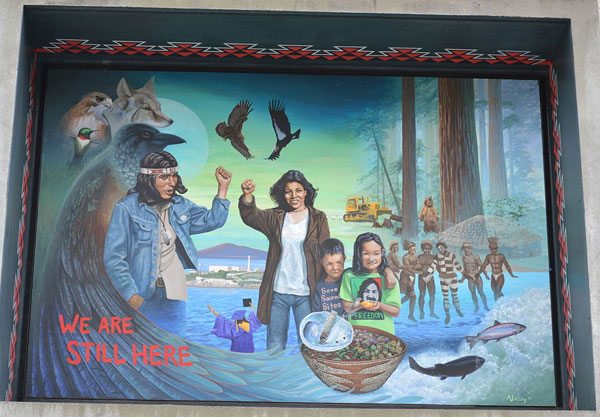
February 17, 2018; Philanthropy News Digest
A new report from the First Nations Development Institute (FNDI), financed by the Fund for Shared Insight, examines community foundation giving to American Indian groups in 10 selected states. According to the report, American Indian-led groups received only 0.15 percent of total grants, even though most states analyzed had above-average concentrations of American Indian residents. Astonishingly, that percentage trails already-modest national numbers. A 2011 Foundation Center report found that American Indians receive 0.3 percent of foundation dollars, even though they are two percent of the US population.
According to 2012–2014 data—which FNDI researchers Catherine Ryan, Sarah Dewees and Raymond Foxworth culled from Form 990 reports of 163 community foundations listed in the Community Foundation Atlas—in an average year, these 163 foundations made grants for $1.3 billion, while American Indian-led groups received less than $2 million. American Indian organizational grants are small (average award of $22,871 for 239 grants over three years) and only 18 percent of grant dollars were for operating support. If Alaskan numbers were not included, the total annual giving number would fall to $1.1 million.
Other than Alaska, the shortfalls are outrageous across the board. In North Dakota, where six percent of residents are American Indian, American Indian groups over three years received five community foundation grants for a grand total of $25,000 (0.29 percent of total grants). In Oklahoma, where American Indians are 13 percent of state residents, American Indian groups over three years received 11 grants for a total of $99,300 (0.04 percent of total grants).
Leaving aside Alaska, North Dakota, and Oklahoma, the numbers for the other seven states are as follows:
| Total grants | American Indian grants | Percent of residents | |
| Arizona | $40.7 million | $294,000 (0.72 percent) | 6 percent |
| California | $923.2 million | $145,600 (0.02 percent) | 2 percent |
| Michigan | $149.5 million | $8,600 (0.01 percent) | 1 percent |
| Montana | $8.1 million | $130,000 (1.61 percent) | 8 percent |
| New Mexico | $14.1 million | $138,000 (1 percent) | 11 percent |
| Oregon | $69.2 million | $142,325 (0.21 percent) | 3 percent |
| South Dakota | $15 million | $199,600 (1.3 percent) | 10 percent |
Alaska provides an exception to this pattern, showing that the paucity of grants to American Indians elsewhere is a choice, not a necessity. In Alaska, over 10 percent of grants made ($858,000 out of $8.24 million) went to Alaska Native organizations. While this number is not proportional to the 19 percent of state residents who are Alaska Natives, Alaska does far better than its “Lower 48” brethren.
Sign up for our free newsletters
Subscribe to NPQ's newsletters to have our top stories delivered directly to your inbox.
By signing up, you agree to our privacy policy and terms of use, and to receive messages from NPQ and our partners.
How have Alaska’s community foundations achieved these results? As Ryan and her colleagues detail, a little intentionality goes a long way:
First, some community foundations in Alaska have designated set-aside funds specially targeting community development in Alaska Native communities. For example, in 2011, Alaska Conservation Foundation launched the Alaska Native Fund. The Fund was created in partnership with the Alaska Native Steering Committee, a foundation committee made up of Alaska Native individuals representing diverse geographic, organizational and generational perspectives. The Alaska Native Steering Committee created funding guidelines, recommends grant awards and promotes the Fund to funding partners and Alaska Native communities. Similarly, in 2017 the Alaska Community Foundation created the Alaska Native Social Justice Fund to support strategic collaborations that prioritize leadership development and allow Alaska Native communities to use their own voices to identify and address the social justice issues that are the most important. to their communities.
It’s worth noting that potential American Indian grantees do exist. For example, in Oregon, six American Indian foundations made grants of $5.6 million in 2014. Not every dollar went to American Indian groups, but, as FNDI has noted, “a large and growing number of tribes and Native nonprofit organizations are using philanthropy to protect Native financial assets, capitalize economic development programs in their communities, and support their cultures.”
Nichole Maher, President and CEO of the Northwest Health Foundation in Portland, Oregon, argues that philanthropic support for education of American Indians could make a tremendous difference. “If community organizations and philanthropy were to effectively partner to increase the [American Indian] graduation rate to be on par with white students (not a very lofty goal),” Maher notes, “this would actually increase the entire state’s graduation rate by well over five percent. This would be a huge win.” Maher adds that similar interventions could be made “in economic opportunity, foster care and other places of community development and care.”
In a masterstroke of understatement, FNDI’s Foxworth told Philanthropy & News Digest that, “Our data suggest that there is very little funding interaction between [American Indian] communities and local community foundations.”
The report identifies six steps community foundations can take. To paraphrase, steps toward greater inclusion include improving communication, reviewing policies, conducting internal analysis, linking with American Indian trade associations, analyzing staff hiring and board recruitment, and inviting American Indian groups to convenings. These are all reasonable steps. But fundamentally, community foundations need to show by doing that they value American Indians as partners.—Steve Dubb












